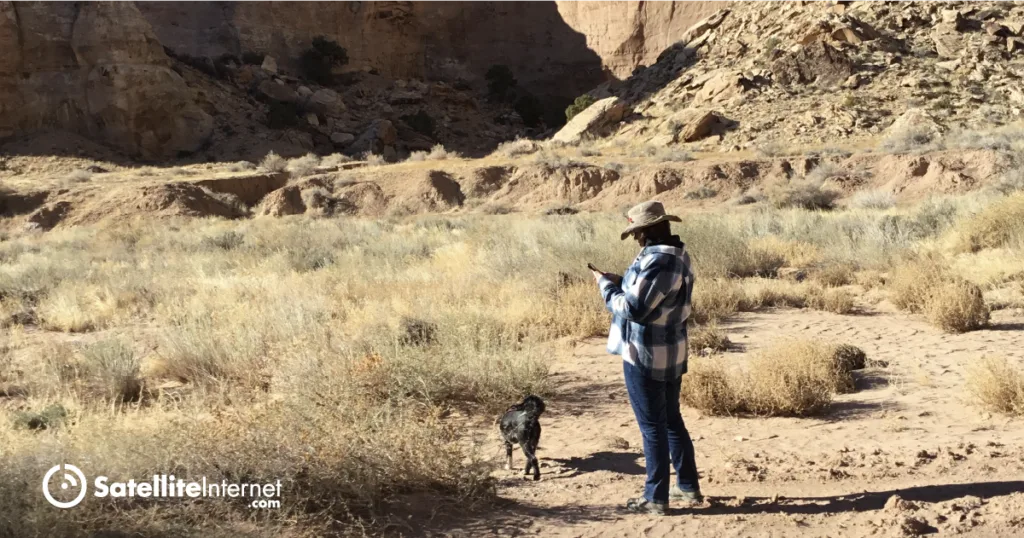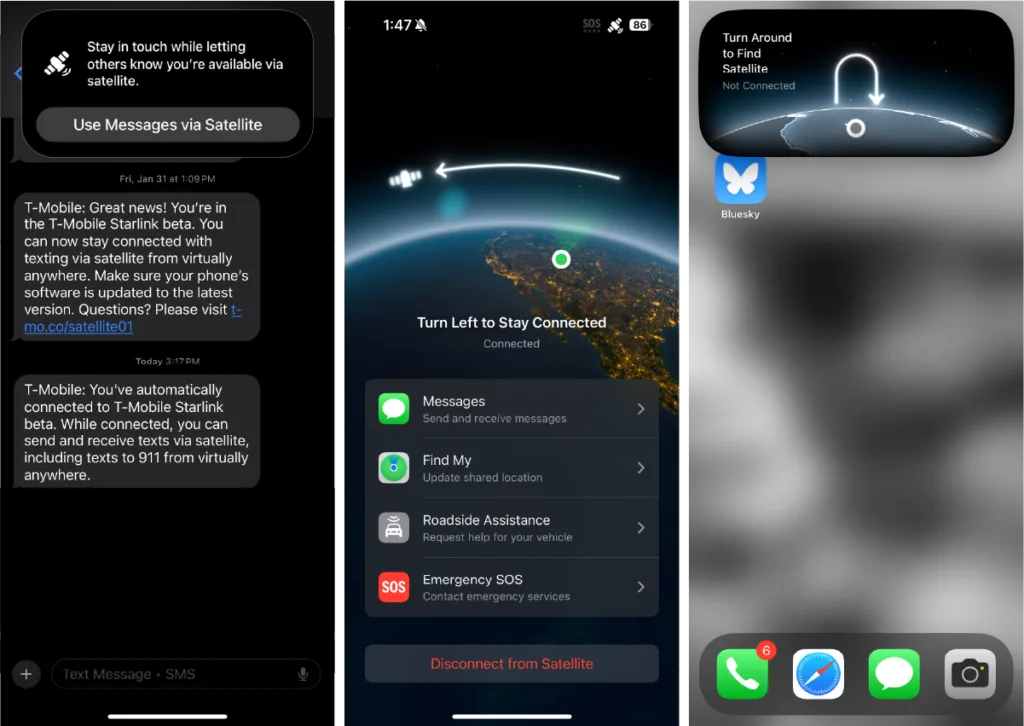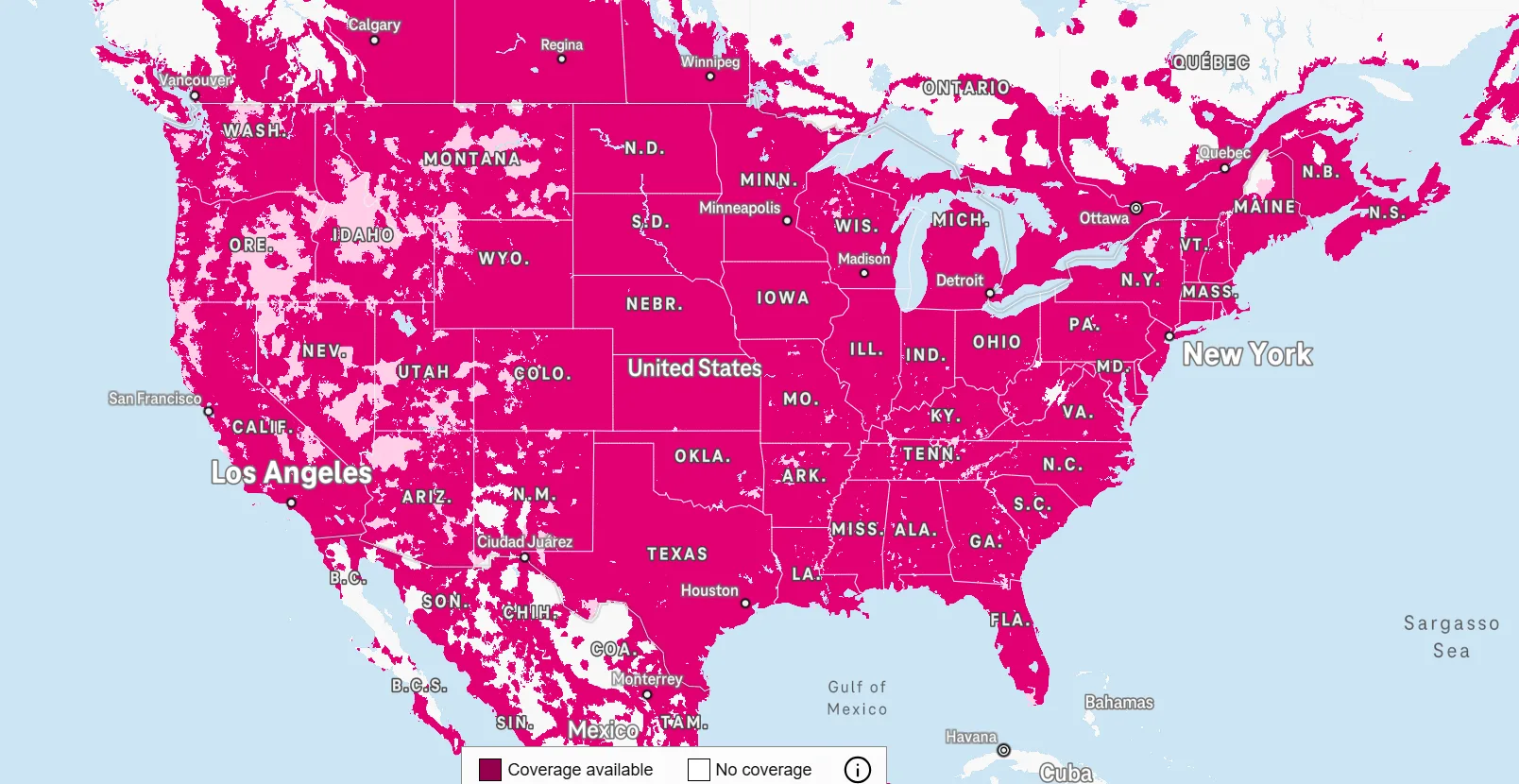T-Mobile Starlink's free beta test is in full swing, and we give our thoughts on the service, which is still in its infancy.
We’ve Tested The T-Mobile Starlink Beta: Here’s What We Found

T-Mobile Starlink is ideal for not just backpackers and weekend warriors but also first responders reacting to emergencies in remote locations. | Image by Bryant Anderson for HighSpeedInternet.com
The T-Mobile Starlink beta is here, and participants' first impressions, including our own, are emerging. Our testing revealed that T-Mobile Starlink works, but it has several caveats that make it imperfect in its current form. The service's mission is to eliminate dead zones worldwide by supplementing terrestrial cellular coverage with satellites that act as orbiting cellular towers. We tested the new service to see if it succeeds in that mission or at least is on its way to achieving it.
The T-Mobile Starlink beta is only accessible to a handful of smartphone models, and there are only limited spots to participate in the beta test. This beta is also open to AT&T and Verizon customers with unlocked phones. During the beta period, only text messaging through SMS is available, along with location sharing. The companies have stated that voice and data will be available in the near future.
I assisted Chili Palmer, consumer advocacy editor at HighSpeedInternet.com, with testing the T-Mobile Starlink beta since she had a compatible phone and got into the beta test. Palmer traveled to a remote area of Utah to test the service while I remained in the city to await her text messages.

T-Mobile Starlink automatically connects to the satellite network once you leave cellular range, though you may need to hold your phone in a certain direction. | Screenshots by Chili Palmer
What You Should Know About Using T-Mobile Starlink
After arriving at a spot entirely out of cellular range, Palmer sent me several text messages after being notified that her phone was connected to Starlink. After holding her iPhone 15 Pro up toward the sky, it took a few minutes for it to connect. However, after sending me 10 different text messages, I only received three of those messages on my Android phone. Comparing the timestamps on our phones, we found one- to three-minute delays between sending and receiving the messages that did go through.
The rest were marked as not delivered. Palmer noted that it took four to five minutes for her to be notified that the messages weren’t delivered, so she advises users to pay attention to their phones and not assume that messages are sent. She received my reply messages that I sent.
Palmer also sent messages to another user on an iPhone and noted that using iMessage through satellite was much faster.
T-Mobile has advised participants to temper expectations of the service’s performance during the beta period. Its disclaimer states that satellite service, including 911, may be delayed, limited, or unavailable. During this beta period, people shouldn’t put themselves in a dangerous situation just to see if it works.
During the beta, you cannot turn off your regular 5G data and enable satellite access—it will only function when you’re in an actual dead zone, as indicated by T-Mobile’s coverage map. This may suggest that the companies are conserving bandwidth capacity for beta participants who use it in optimal environments. Starlink is still launching Direct to Cell satellites for better coverage and is awaiting approval from the FCC to increase its spectrum to allow for voice and data.

T-Mobile's official coverage map. The pink areas represent dead zones where satellite coverage should work. | Image by T-Mobile
What We Thought of the T-Mobile Starlink Beta
Unfortunately, most of the text messages Palmer sent to me failed to deliver. Several factors could have accounted for this, such as her location, our phone models, or the status of the satellite network. Ultimately, I received some of her messages, so it works with persistence and patience. Also, the few-minute delay between messages is long, but not as long as I expected, given the higher latency inherent in satellite communications. It’s a suitable lifeline for those who want to be able to reach emergency services when needed, is much more affordable than satellite phones, and is a good option for non-Apple phones that already have an SOS satellite feature.
Even with its current capabilities and upcoming features, the service has limited use cases, given the growing availability of T-Mobile and other carriers.
“It’s going to be a great tool for first responders and people who frequently go backpacking,” Palmer said. “But the truth is there aren’t enough dead zones in the U.S. to justify a subscription long-term.”
Both Palmer and I concur that T-Mobile Starlink is a valuable asset for regions going through natural disasters that knock out cellular towers and power—as it was following the hurricanes in the south and the Los Angeles wildfires. Therefore, it may be worth it for residents in disaster-prone regions since we don’t know if T-Mobile and Starlink would offer the service for free again.
There are also few details on how the plans will work. T-Mobile's website indicates that the service can be canceled anytime on the T-Life app.
We will continue to monitor and experiment with T-Mobile Starlink as the beta test progresses, more phones become compatible, and performance improves.